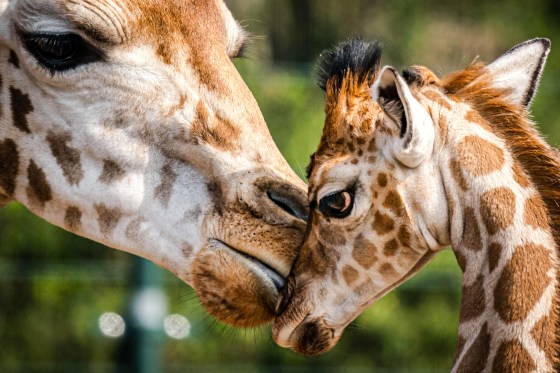
As their numbers continue to drop after years of decline, U.S. officials recommended Wednesday that three giraffe subspecies should be put to the endangered species list.
Under the Endangered Species Act, the U.S. Fish and Wildlife Service suggested that the northern giraffe subspecies found in West Africa, Kordofan, and Nubia be listed as endangered. The service also suggested designating the Masai and reticulated giraffes as threatened.
In a statement, Fish and Wildlife Service Director Martha Williams said federal safeguards for giraffes will support ecosystem health, prevent wildlife trafficking, increase biodiversity, protect a fragile species, and advance sustainable economic practices. While ensuring that the United States does not further contribute to the reduction of giraffes, this step aids giraffe conservation.
According to the EPA, fish, mammals, and plants that are categorized as vulnerable or endangered are protected under the 1973 Endangered Species Act.
The Fish and Wildlife Service claims that poaching, habitat degradation, and climate change are to blame for the reduction in giraffe populations. According to officials, urbanization-induced fragmentation and degradation as well as the growing human population are the other main challenges.
By requiring licenses to import giraffes into the United States, the proposed listing will benefit the animals by limiting illegal hunting and trading, according to the Fish and Wildlife Service.
According to Fish and Wildlife Service authorities, trade with the United States is a contributing reason to the giraffe population decline, although it is not the primary concern. Furthermore, giraffes are important due to their “use in traditional medicine” and the hair and tails they have. Hunters and poachers have recently targeted giraffes for bushmeat.
According to officials, listing giraffes as endangered would also boost financing for conservation in the nations where they are found, increase money for conservation-related research, and provide limited financial help to conservation projects.
According to the Fish and Wildlife Service, the number of West African, Kordofan, and Nubian giraffes has decreased by almost 77% since 1985, from over 25,000 animals to just under 6,000. According to officials, there are only 690 West African giraffes left.
According to the Fish and Wildlife Service, the great majority of the 15,985 reticulated giraffes in the world are found in Kenya. In the 1970s, there were about 45,400 Masai giraffes, or about 67% of the overall population.
According to the Fish and Wildlife Service, giraffes, the tallest terrestrial mammals still alive, eat a lot of leaves, stems, flowers, and fruit. Although the creatures are adaptable and can live in a variety of environments, they are most frequently seen in forest and savanna settings, always close to trees or bushes.
The public has 90 days to comment on the proposal to classify the giraffe subspecies as endangered.
Note: Thank you for visiting our website! We strive to keep you informed with the latest updates based on expected timelines, although please note that we are not affiliated with any official bodies. Our team is committed to ensuring accuracy and transparency in our reporting, verifying all information before publication. We aim to bring you reliable news, and if you have any questions or concerns about our content, feel free to reach out to us via email. We appreciate your trust and support!
